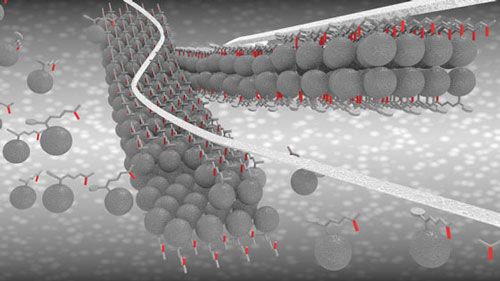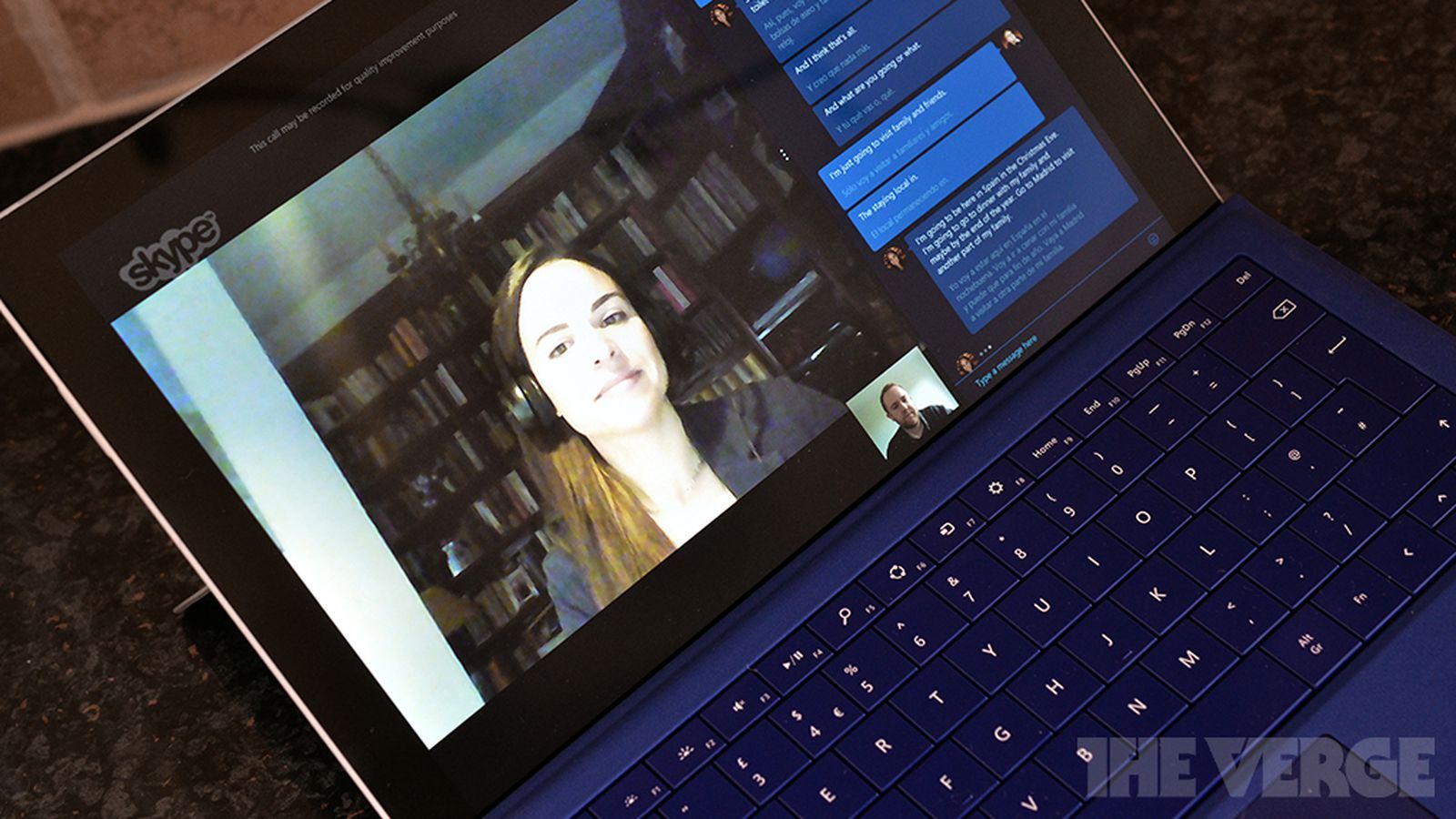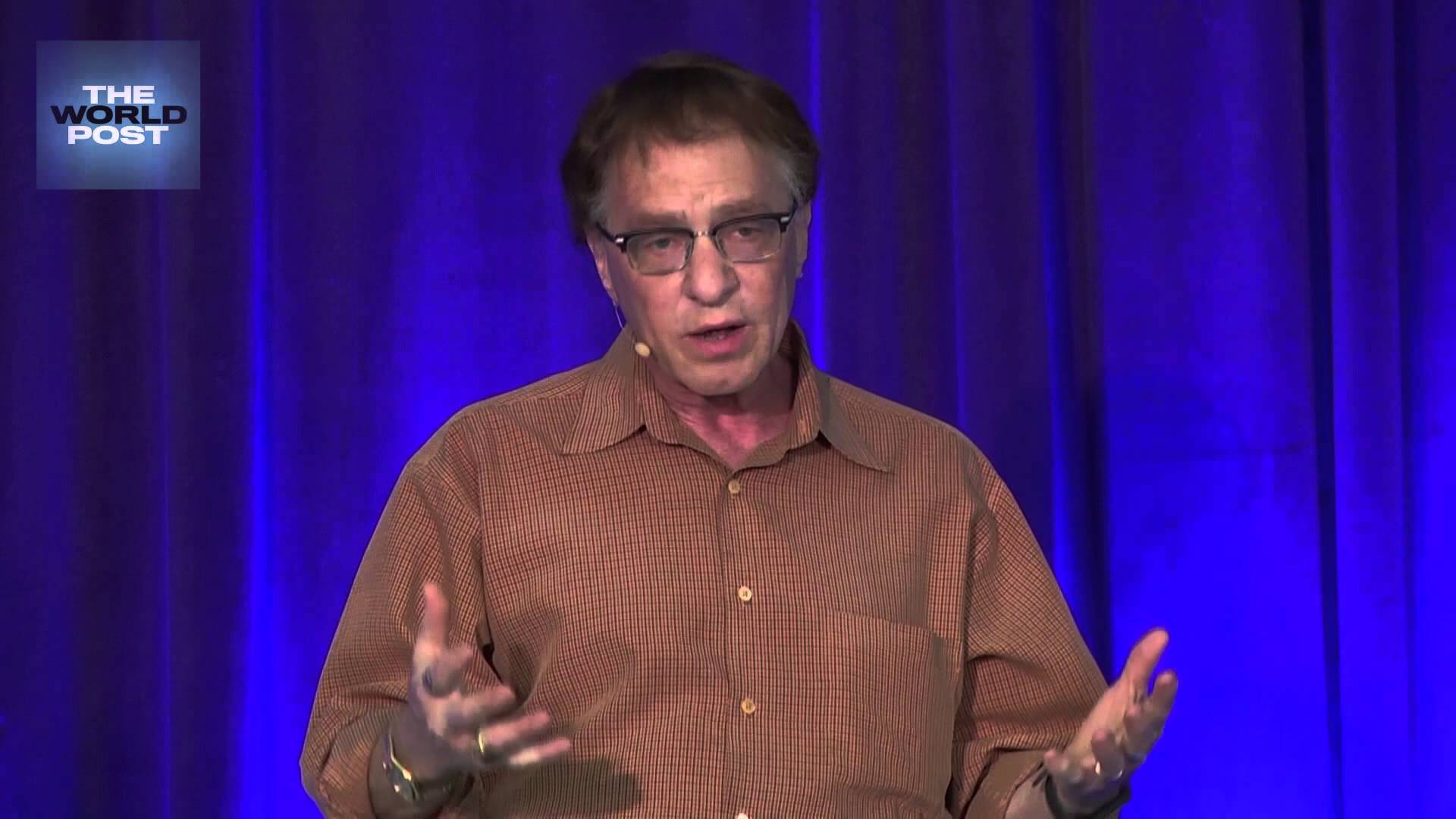Physicists have developed a method to synthesise a unique and novel type of material which resembles a graphene nanoribbon but in molecular form. This material could be important for the further development of organic solar cells.


Physicists have developed a method to synthesise a unique and novel type of material which resembles a graphene nanoribbon but in molecular form. This material could be important for the further development of organic solar cells.

Following Moore’s law is getting harder and harder, especially as existing components reach their physical size limitations. Parts like silicon transistor contacts — the “valves” within a transistor that allow electrons to flow — simply can’t be shrunken any further. However, IBM announced a major engineering achievement on Thursday that could revolutionize how computers operate: they’ve figured out how to swap out the silicon transistor contacts for smaller, more efficient, carbon nanotubes.
The problem engineers are facing is that the smaller silicon transistor contacts get, the higher their electrical resistance becomes. There comes a point where the components simply get too small to conduct electrons efficiently. Silicon has reached that point. But that’s where the carbon nanotubes come in. These structures measure less than 10 nanometers in diameter — that’s less than half the size of today’s smallest silicon transistor contact. IBM actually had to devise a new means of attaching these tiny components. Known as an “end-bonded contact scheme” the 10 nm electrical leads are chemically bonded to the metal substructure. Replacing these contacts with carbon nanotubes won’t just allow for computers to crunch more data, faster. This breakthrough ensures that they’ll continue to shrink, following Moore’s Law, for several iterations beyond what silicon components are capable of.
“These chip innovations are necessary to meet the emerging demands of cloud computing, Internet of Things and Big Data systems,” Dario Gil, vice president of Science & Technology at IBM Research, said in a statement. “As technology nears the physical limits of silicon, new materials and circuit architectures must be ready to deliver the advanced technologies that will drive the Cognitive Computing era. This breakthrough shows that computer chips made of carbon nanotubes will be able to power systems of the future sooner than the industry expected.” The study will be formally published October 2nd, in the journal Science. This breakthrough follows a number of other recent minimization milestones including transistors that are only 3-atoms thick or constructed from a single atom.

Microsoft first released Skype Translator almost a year ago as a standalone app designed for Windows 8. The software giant is now integrating its impressive translation feature directly into the desktop version of Skype, opening it up to Windows 7, Windows 8, and Windows 10 users. Six voice languages will be supported at launch, including English, French, German, Italian, Madarin, and Spanish. Skype will now let you hold a conversation in any of them, without ever needing to learn a language.
“It has been a long-time dream at Skype to break down language barriers and bring everyone across the globe closer together,” explains Microsoft’s Skype team. “Researchers, engineers, and many others across Microsoft have been working hard to make this dream a reality and we are looking forward to bringing this preview technology to more devices.”


Suggests a mechanism to be adopted for any
cryptocurrency that would alter the fee layer to
help fund a new public good.
From ABIS concept
In 2013, following a period of reflection and visioning, I imagined the possibility of completely altering the financial system as we know it. This vision, known as ABIS, will now see its first-ever implementation.
The implementation is now being issued in BCN’s GUI Wallet with the release of v. 1.0.8, where the transaction has been re-envisioned to allow the user new ways to explore the possibilities of transactions and realize greater giving potential, initially through two use cases involving unique forms of donations:
This wallet is now available for anyone around the world to utilize and can aid those seeking to facilitate voluntary donation processes, and it is possible that more use cases for further microgiving possibilities may be added to the graphical wallet in the future.
Social Dimensions and Notions of the Transaction Have Limited Wallet Design Universally.
Most wallet software is designed with certain assumptions about what transactions are. If most in society have developed an assumption about what a transaction is, the manifestation of what our cryptocurrency wallets become (and the format in which the graphical user interfaces are developed to facilitate transactions) will tend to follow such a trend.
If a transaction (in which one sends, or transfers resources) remains limited notionally only as an exchange of currency for goods, services, or other currency, there is a problem in terms of the capacity which we are allowing ourselves to develop and enjoy from decentralized systems.
Certainly, this problem has not solely been in Bytecoin (BCN) but can be seen in any other cryptocurrency wallets as well, and of course, in all currency systems. Legacy systems — those which utilize fiat currencies and rely heavily upon central banks — simply do not have the flexibility to transmit very small amounts efficiently. Cryptocurrency systems are better poised to handle small amounts, but how they handle them will differ depending on the type of cryptocurrency being utilized.
Up to this point, some technical challenges exist which have kept cryptocurrency and wallet developers from tackling the issue, as mentioned in the BCN developer’s blog post, ‘Future of Slacktivism: How 1,000,000 Likes Can Save Lives’. Thus, cryptocurrency wallets do not yet emulate natural giving systems to the degree that they could.
The problem is that, around the globe, we have not yet re-envisioned the transaction to allow the user new ways to explore a transaction’s full potential and offer the option of greater giving potential. However, we now have the means to do so.
The initiative taken by the Bytecoin community to address this issue has resulted in software that is arguably the first of its kind ~ resistant to financial censorship (utilizing BCN’s installable desktop graphic wallet, which has anonymity preferences for transactions which the user can alter on a sliding scale ranging from greater to lesser anonymity), and now, allowing compassionate options for any user, which allow small donations to be sent and received anywhere in the world without any need for an intermediary.
Because the entire concept is fully voluntary there are really a nearly infinite range of choices, essentially limited only by the technology, fees, and network limitations. The user is contemplating who to provide a micro-donation to and at what level and at what threshold the microdonation(s) will be broadcast, based on their wallet settings.
And I hope that we would in this model of giving become more like the bees that share pollen as they bounce from flower to flower (indeed, the acronym of the concept, ABIS, stands for “Ants, Bees, Information, and Systems”).
An interesting commentary from recent events comes from the transcript of Pope Francis’s remarks to US Congress on Sept. 24, 2015:
‘We have the freedom needed to limit and direct technology’; ‘to devise intelligent ways of… developing and limiting our power’; and to put technology ‘at the service of another type of progress, one which is healthier, more human, more social, more integral’
We have the tools now at our disposal, and these tools are vital to have, but even more vital is having compassion and the desire to extend what we have to others, and to build systems in ways which do not rely upon coercion, violence, and the perils of institutional power.
ABISprotocol
PGP 0x6c70abf8a7486f02

Once we’re cyborgs, he says, we’ll be funnier, sexier and more loving.

The word on every tech executive’s mouth today is data. Curse or blessing, there’s so much data lying around – with about 2.5 quintillion bytes of data added each day – that it’s become increasingly difficult to make sense of it in a meaningful way. There’s a solution to the big data problem, though: machine learning algorithms that get fed countless variables and spot patterns otherwise oblivious to humans. Researchers have already made use of machine learning to solve challenges in medicine, cosmology and, most recently, crime. Tech giant Hitachi, for instance, developed a machine learning interface reminiscent of Philip K. Dick’s Minority Report that can predict when, where and possibly who might commit a crime before it happens.
“A design concept created by Nitcha Fame Tothong, an MFA student at the Parsons School of Design in New York, the keyBod “explores the mechanical relationship between the body, mind, and digital environment.””


New research from Brown University details a relatively accessible method for making a working (though not thinking) sphere of central nervous system tissue.
If you need a working miniature brain — say for drug testing, to test neural tissue transplants, or to experiment with how stem cells work — a new paper describes how to build one with what the Brown University authors say is relative ease and low expense. The little balls of brain aren’t performing any cogitation, but they produce electrical signals and form their own neural connections — synapses — making them readily producible testbeds for neuroscience research, the authors said.
“We think of this as a way to have a better in vitro [lab] model that can maybe reduce animal use,” said graduate student Molly Boutin, co-lead author of the new paper in the journal Tissue Engineering: Part C. “A lot of the work that’s done right now is in two-dimensional culture, but this is an alternative that is much more relevant to the in vivo [living] scenario.”

Call me skeptical. That said, who knows? It’s worth keeping an eye out for updates, at least.
Most of us might pray that the key to living forever will be found in our lifetime and, well, it has — according to one Russian scientist.
Anatoli Brouchkov reckons he has found the key to eternal life — but selfishly he isn’t going to let the rest of us try it out for ourselves.
The 58-year-old has injected himself with bacteria — and not any old bacteria either, this stuff is 3.5 BILLION years old.